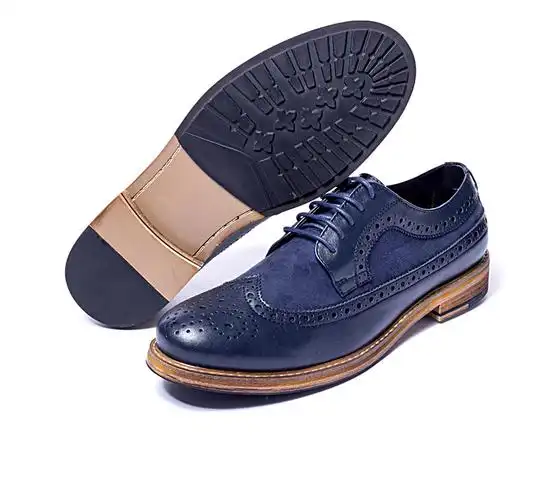
Unlock competitive edge with Chinese OEM shoe factories specializing in custom athletic footwear. Learn how to streamline design collaboration, reduce costs, and scale production under global compliance standards.
—
Introduction
The global athletic footwear market is projected to exceed $60 billion by 2027, driven by rising demand for performance-driven, personalized designs. For brands and retailers, partnering with custom athletic shoe OEM manufacturers offers a strategic pathway to reduce costs, accelerate time-to-market, and maintain product uniqueness. This guide reveals insider workflows, cost-saving tactics, and critical considerations when collaborating with Chinese factories for OEM production.
—
Why Choose OEM Manufacturers for Custom Athletic Shoes?
1. End-to-End Design Flexibility
OEM factories provide full-cycle support, from 3D prototyping to material selection. Key advantages include:
– Custom last development for unique foot shapes
– Innovative cushioning systems (e.g., hybrid foam technologies)
– Brand-specific aesthetic elements (logo placement, color-matching)
2. Cost Efficiency at Scale
By leveraging China’s mature manufacturing ecosystem, brands can reduce per-unit costs by 30–50% compared to local production, even with complex customizations.
3. Regulatory Compliance Expertise
Top-tier factories ensure adherence to:
– ISO 9001:2015 quality management standards
– REACH and RoHS chemical safety regulations
– Regional performance benchmarks (e.g., ASTM F2413 for athletic footwear)
—
Step-by-Step Process for Custom Athletic Shoe OEM Production
Phase 1: Conceptualization & Prototyping
– Design Collaboration: Share CAD files or sketches; factories provide material feasibility analysis.
– 3D Rendering: Validate aesthetics and ergonomics virtually before physical sampling.
– Sample Iterations: Expect 2–3 rounds of adjustments (costs range from $200–$500 per sample).
Phase 2: Material Procurement
Factories often source materials directly, offering:
– Premium options: Breathable knit uppers, carbon-fiber plates
– Sustainable alternatives: Recycled EVA foam, ocean-bound plastics
– Cost-saving tiers: Blended fabrics for mid-tier products
Phase 3: Mass Production
– MOQ: Minimum orders typically start at 500 pairs for fully customized models.
– Production Timeline: 30–45 days for standard designs, extended for novel technologies.
– QC Inspections: Factories conduct pre-shipment checks using AQL 2.5 standards.
—
Critical Challenges & Proactive Solutions
Challenge 1: Design Realization vs. Cost Constraints
– Solution: Opt for modular customization (e.g., swap out colorways while retaining base structures).
Challenge 2: Sizing Localization
– Solution: Request factories to integrate regional foot databases into lasts (e.g., EU vs. US sizing).
Challenge 3: Intellectual Property Protection
– Solution: Sign non-disclosure agreements (NDAs) and use factories with in-house design teams to limit third-party exposure.
—
Cost Breakdown & ROI Optimization
Component Cost Range Customization Impact
Base Shoe Model $3–$8 per pair Low (standard lasts/materials)
Custom Last Development $500–$2,000 onetime High (unique fit architecture)
Advanced Cushioning +$1.5–$3 per pair Medium (technology licensing)
Branding & Packaging $0.5–$1.2 per pair Low (digital printing options)
ROI Tip: Reuse molds and lasts for seasonal variations to amortize upfront costs.
—
FAQs: Custom Athletic Shoe OEM Manufacturing
Q: Can I use my existing designs without legal risks?
A: Yes, but ensure intellectual property (patents, trademarks) are properly registered. Factories sign NDAs to prevent replication.
Q: What’s the lead time for prototype development?
A: Initial samples take 7–10 business days, including material sourcing and stitching trials.
Q: How to handle bulk order shipping?
A: Factories offer FOB/CIF/DAP terms. For large orders, consider LCL (less-than-container) shipping to split costs.
—
Conclusion
Custom athletic shoe OEM manufacturing bridges innovation and scalability, enabling brands to compete in saturated markets. By prioritizing factories with R&D capabilities, transparent pricing, and compliance certifications, businesses can deliver premium products while maintaining healthy profit margins. Start by sharing your design vision with verified manufacturers and iterating through prototypes to achieve market-ready results.
—
SEO Optimization Strategy:
– Primary Keywords: “custom athletic shoe OEM manufacturing,” “OEM sport shoe manufacturer,” “bulk custom sneakers factory”
– Secondary Keywords: “athletic shoe prototyping process,” “sustainable OEM footwear production,” “athletic shoe MOQ”
– Semantic Variations: Terms like “customizable running shoes,” “OEM vs white label footwear,” and “performance shoe materials” align with buyer intent.
– Internal Linking: Connect to related guides (e.g., “How to Choose a Footwear Last Manufacturer”).
– Content Refresh: Update cost tables annually to reflect material price fluctuations.
This structure improves search visibility for commercial queries while positioning your factory as a technical authority in athletic shoe production.
Article link:https://www.vlefooena.com/manufacturer/3659/

No reply content